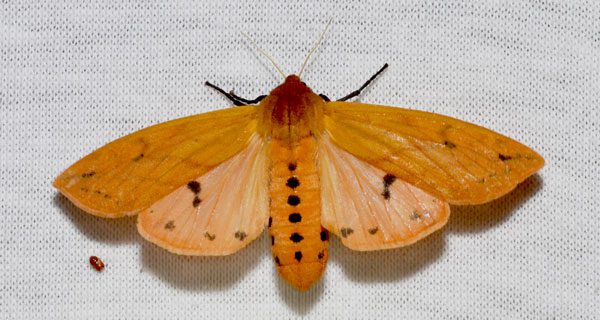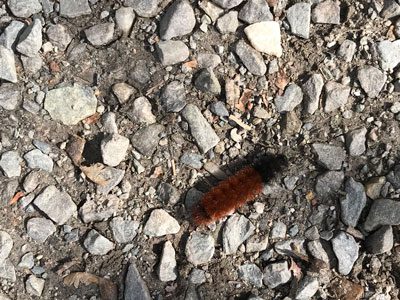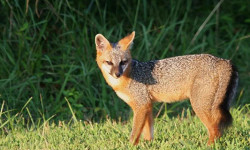[ccfic caption-text format="plaintext"]
By Lisa Moore
Hometown Weekly Correspondent
Winter is coming! While the warmer than normal temperatures this fall have been a nice treat, fellow New Englanders know it is just a temporary respite from the colder days ahead. While most people are familiar with the prognosticator Ms. G, Massachusetts’ official groundhog, for her prediction on the duration of winter on Groundhog Day, we can also turn to other signs around us heralding winter’s arrival.
One such sign is the woolly bear Caterpillar. Whether fact or folklore, this caterpillar is legendary.
In the fall of 1948, a scientist named Dr. C.H. Curran, a curator at the Museum of Natural History in New York City, conducted a study of the woolly bear Caterpillar at Bear Mountain State Park. For eight consecutive years, Dr. Curran went to the park in the fall and collected as many woolly bears as he could find, noting the color variations among them. He indicated that his efforts were just a fun experiment, and provided an excuse to go into the woods and foliage watch each fall.
Based on his observations, he correlated that those caterpillars with more brown coloration indicated a mild winter ahead, and those with more black coloration predicted a harsher winter to come. The publicity of Dr. Curran’s work garnered the woolly bear much attention, making it the most recognizable caterpillar in North America.
The woolly bear, also called woolly worm and fuzzy worm, is the caterpillar larval stage of the Isabella tiger moth, pyrrharctia isabella. Whether you believe the folklore or not, this little creature is really quite amazing. It has 13 body segments when fully grown, corresponding to the nearly 13 weeks of winter. The body segments are covered with stiff, hairy bristles. While the hair is non-venomous and non-irritating, handling the caterpillar can cause the stiff hairs to pierce the skin. There is normal color variation found among members of this species. As it grows new segments, the color of each segment may be brown or black, giving the caterpillar a banded appearance.
Fall is the time when we find these caterpillars on the march, migrating to find a suitable location to overwinter and hibernate. This unique animal has the ability to produce cryoprotectant chemicals in its cells, allowing the caterpillar to freeze in winter, hibernating as a caterpillar popsicle until warmer temperatures thaw the caterpillar, and trigger it to finish its life cycle.
If you come across one of these fuzzy critters scurrying across a sidewalk, take a minute to observe their behavior. If bothered, this caterpillar will roll up into a ball and play dead. When the threat is gone, it will unfurl and quickly crawl away. A generalist feeder common in northern Mexico, the US, and the southern third of Canada, the woolly bear is not as destructive as the gypsy moth caterpillar. It feeds on a wide variety of plants including grasses, herbs, and trees. When winter arrives, the caterpillar will hibernate inside rock cavities, behind old tree bark, or under logs and rocks. In the spring, it comes out of hibernation, spins a fuzzy cocoon, and undergoes a metamorphosis, changing inside the cocoon and emerging as a medium-sized, yellow/orange and cream colored moth with black spots.
Scientists have studied this caterpillar and believe the color striped pattern they exhibit may indeed be tied to weather. However, it may indicate the past year’s weather instead of predicting the coming year’s weather. Scientists believe that caterpillars born early in a warm spring may develop more brown segments, while those born late in spring or under harsher climate conditions might develop more black segments.
Whether folklore or scientific fact, the woolly bear caterpillar remains a fuzzy reminder that winter is coming.























